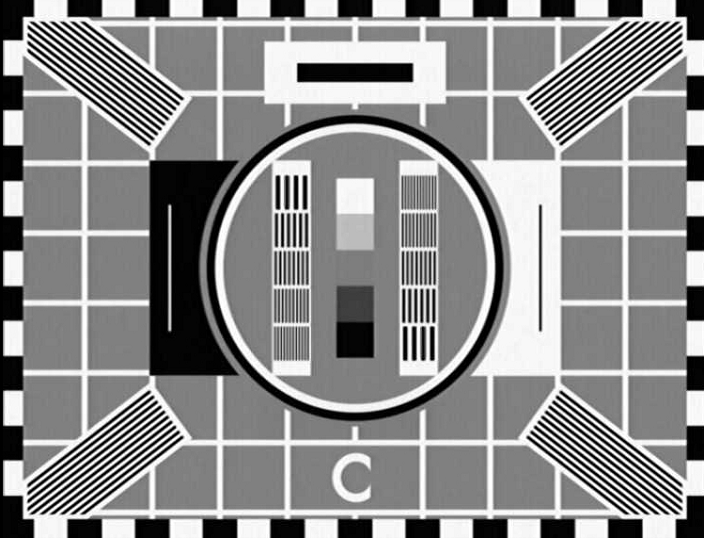
Line up Tone (1 KHz (1000 cycles per second))
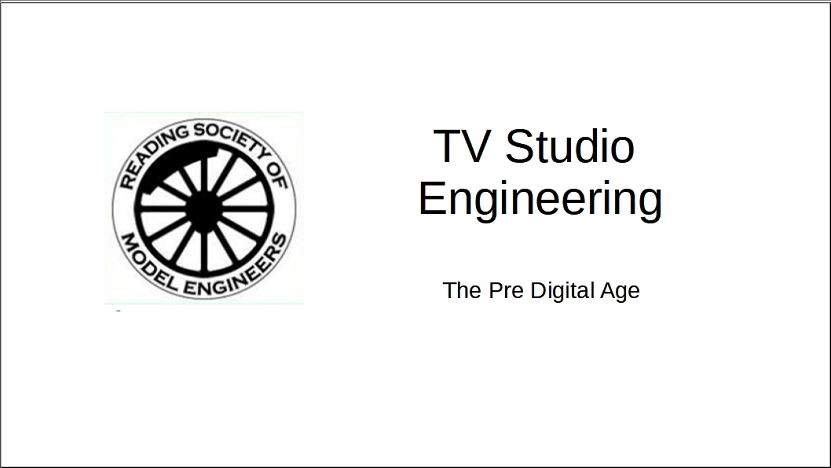
A presentation for the
READING SOCIETY OF MODEL ENGINEERS
Alec Bray
A Note about this Web Presentation
The original presentation was set up to cope with the viewing conditions in the RSME clubhouse, and used white lettering on a black background.
For this Web-based version, many of the slides have been reversed out, to give black-on-white: this is better for web viewing and printing. Not all the slides could be presented in this way, however, so some slides have been heavily cropped to suit.
As the slides were designed with a black background, not all of them will look quite as nice in this current format.
Introduction
In the times when the only way to receive entertainment in your home was by free-to-air television broadcasting, the studios of the British Broadcasting Corporation were the world-beating centre of excellence for theatrical style, multi-camera, live or as-live television drama production with developing camerawork: but not just drama, but children’s programmes. Schools programmes, comedy programmes, situation comedies (sitcoms) and shiny floor Saturday Night spectacular shows. On Saturday 12th January 1963, I was sitting at home at 5.25 in the afternoon watching the second episode of “The Chem Lab Mystery”
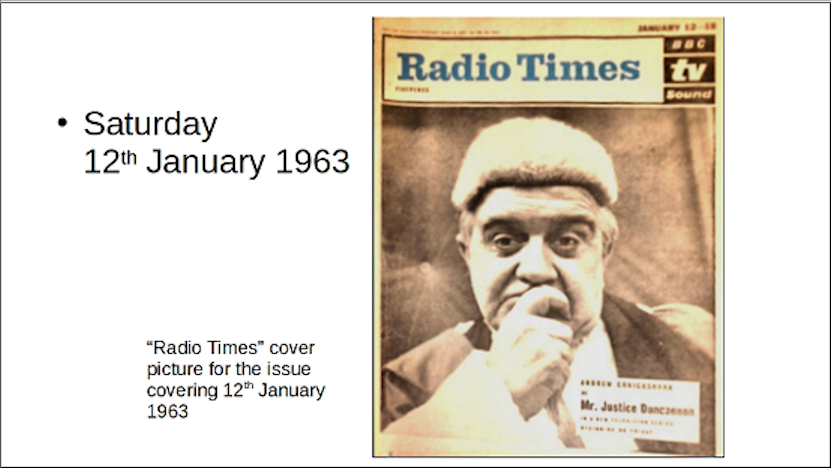
What other programmes were broadcast on that Saturday in 1963? The cover of the issue of “Radio Times&quoit; for that Saturday will not give you any clues! Saturday Night programmes included:
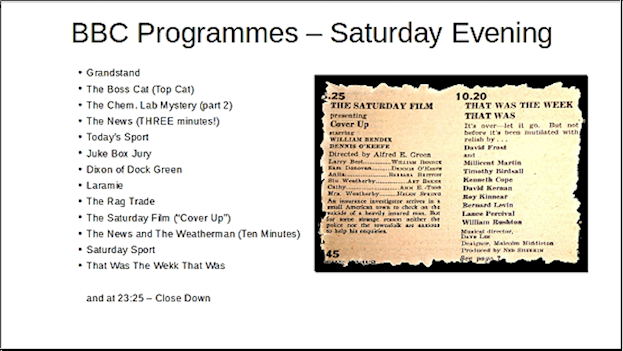
Remember that? Close Down at 23:25!! And the disappearing dot on the telly screen … The following Monday – 14th January 1963 I reported for duty at Broadcasting House. The next three days were induction into the BBC (in what was originally the “Langham” Hotel, and now latterly restored once again to be the Langham Hotel!). And then, on Thursday 17th January 1963, I was sent to Studio E Lime Grove (originally the Gainsborough Film Studios) to become part of the studio crew, Crew 7, working on the next but one episode (episode 3) of “The Chem Lab Mystery.”
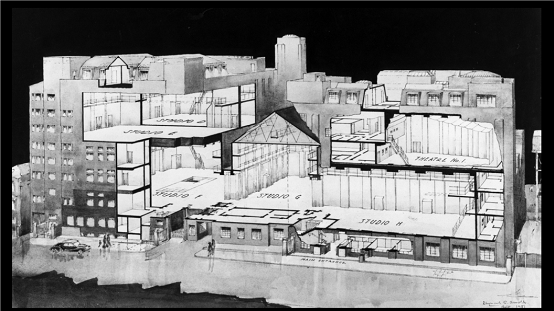
The senior cameraman on Crew 7 was Mike Bond
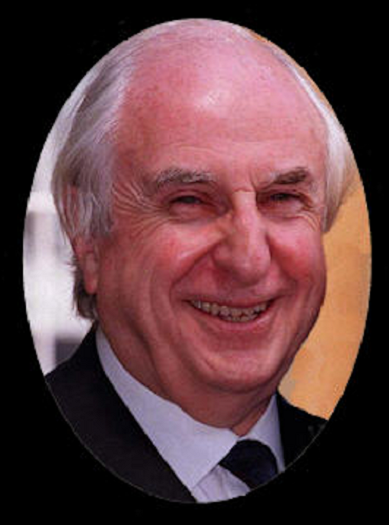
You know him better as Michael Bond of “Paddington” fame. He was such a nice person and a very good cameraman. Of course, I had to get something to do with trains in this presentation!
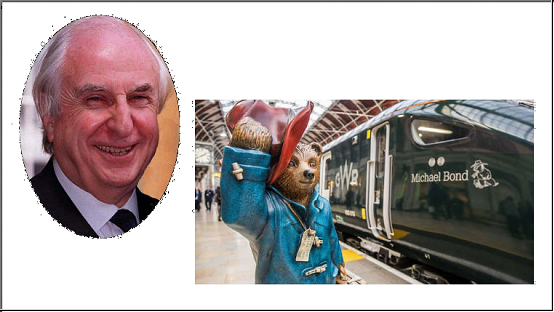
Studio crews were made up of some 11 people, which included 4 cameramen, 3 sound boom operators, 2 dolly operators and a couple of crew reliefs. All blokes. The only ladies were the Vision Mixers -. originally part of the Studio crews, but very soon after I joined they were whisked off to become part of “production.” The number of crews grew: at the peak there were nineteen studio crews. To a large extent, the crews were self- selecting. In my time, Crews 2 and 5 did the really serious dramas, Crews 3 and 13 did many of the light entertainment shows. The studio crews worked with actors and directors to produce world-class, world beating, theatrical-style multi-camera live and as-live television drama, light entertainment, features, schools programmes – and more… I worked on three series of “Dixon of Dock Green” and three seasons of “Softly Softly” (sorry, two series: the second one was split before and after Christmas), but there were plenty of other programmes in the mix – especially “Top of the Pops”.
 |  |  |



